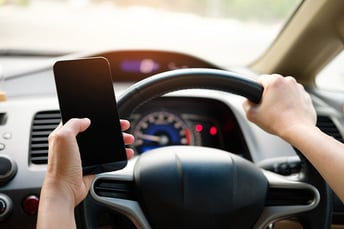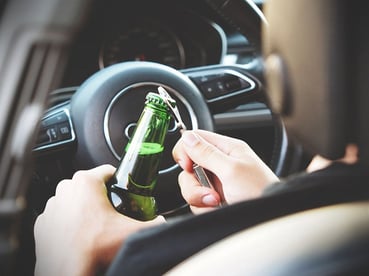The risks of driving these days are much higher than they used to be. Not only are we dealing with possibly drunk drivers on the road, but we also have to be aware of “distracted drivers." More specifically, drivers on their phones. The National Safety Council reports that cell phone use while driving leads to 1.6 million crashes each year.
So, what are the dangers of texting drivers vs. drunk drivers? We’ll talk about which one is more dangerous, statistics about accidents, and what you can do to protect yourself.
Statistics: Texting While Driving
Texting while driving has devastating consequences for all age groups, but mainly for teenagers. Consider the following statistics:
-
Distracted driving crashes are under-reported, and the NSC estimates that cell phone use alone accounted for 27 percent of 2015 car crashes.
-
The NHTSA reports, during daylight hours, approximately 481,000 drivers are using cell phones while driving.
-
Driver distraction is responsible for more than 58 percent of teen crashes. AAA Foundation for Traffic Safety
-
According to a AAA poll, 94 percent of teen drivers acknowledge the dangers of texting and driving, but 35 percent admitted to doing it anyway.
-
Text messaging increases the risk of crash or near-crash by 23 times. Virginia Technical Transportation Institute, USDOT
-
Sending or reading a text message takes your attention away for about five seconds, long enough to cover a football field while driving at 55 mph. NHTSA
Is texting while driving more dangerous than drinking and driving?
We’ve always known about the danger of drunk driving. Drivers tend to drive more aggressively, follow other cars more closely, and have slower reaction times braking or adjusting to other vehicles on the road when under the influence.

But, it turns out that impairments while texting or talking on the phone are similar to drunk drivers. According to a research study by the University of Utah:
“Drivers who talked on either handheld or hands-free cell phones drove slightly slower, were nine percent slower to hit the brakes, displayed 24 percent more variation in following distance as their attention switched between driving and conversing, were 19 percent slower to resume normal speed after braking, and were more likely to crash.”
Yikes!
Some researchers say texting is more dangerous than talking on the phone because drivers are distracted on multiple levels; manually (holding the phone and pressing buttons), visually (looking at the phone), and cognitively (thinking about other things than driving).
If you compare the number of people killed in alcohol related accidents in 2016 (10,497) with the number of people killed by distracted driving in 2016 (3,450), it seems that drunk driving is sadly claiming more lives than distracted driving. However, there is an argument by the NSC that distracted driving is severely underreported and the death toll caused by distracted driving may be higher.
What can you do to protect yourself?
The facts are scary. Driving while texting or distracted is dangerous, and here is what you can do to protect yourself.
-
Plan ahead and know where you’re going — relying on GPS while driving can be a distraction.
-
It may sound like a no-brainer, but to best protect yourself, drive sober and put your phone down! Try turning it off while you’re in the car.
-
If turning it off isn’t an option, set your phone to silent so you don’t hear the “chime” or “ding” and feel tempted to read the message or to respond.
-
If you MUST respond, let the passenger help! They can respond to a text if it’s absolutely necessary to let you have both hands on the wheel.
Distracted driving has been around for a long time, but texting and driving adds a whole new danger. We encourage all Tennesseans to set an example for those around you, particularly your children. If they see their parents driving distracted, they are more likely to do the same thing. If they see you acting responsibly, they are likely to mimic that behavior as well as putting peer pressure on their friends to drive safer.
Learn more about driver texting and distraction personal injury.

.jpg)
